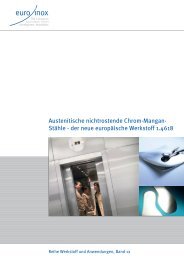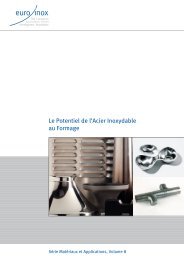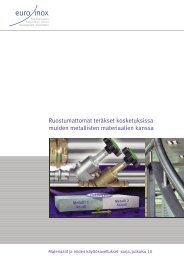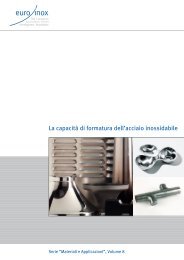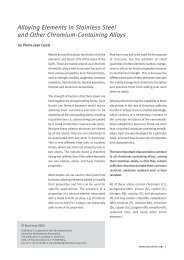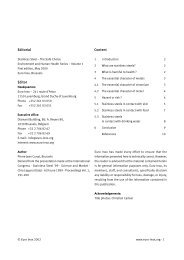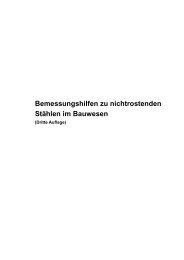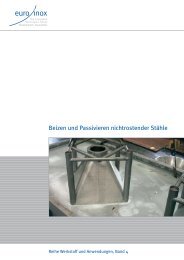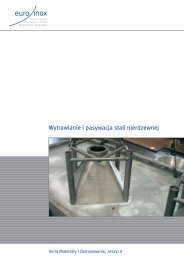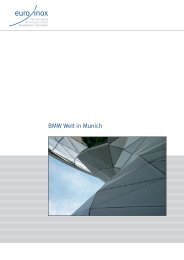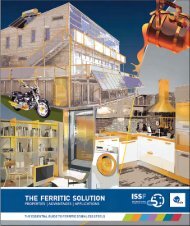Innovative Stainless Steel Applications in transport ... - Euro Inox
Innovative Stainless Steel Applications in transport ... - Euro Inox
Innovative Stainless Steel Applications in transport ... - Euro Inox
Create successful ePaper yourself
Turn your PDF publications into a flip-book with our unique Google optimized e-Paper software.
A “three-roll” (pyramid-type) bender was chosen for bend<strong>in</strong>g tubes with a cross-section<br />
of 50 × 20 × 1 mm and 3400-mm bend<strong>in</strong>g radius – which is close to the roof radius of<br />
rail carriages, <strong>in</strong> which curved sandwich panels can be probably used (Figure 56). The<br />
BUS project also studied the draw-bend<strong>in</strong>g method and, especially, spr<strong>in</strong>gback.<br />
78<br />
Figure 56. The three-roll tube-bend<strong>in</strong>g<br />
mach<strong>in</strong>e used <strong>in</strong> the DOLTRAC experiments.<br />
The actual bend<strong>in</strong>g characteristics of a material will be affected by the size and crosssection<br />
of the tube be<strong>in</strong>g bent, the physical properties of the material, the tool<strong>in</strong>g used<br />
and the mach<strong>in</strong>e set-up used to make the bend. The many parameters <strong>in</strong>volved make it<br />
very difficult to predict the spr<strong>in</strong>gback that will occur <strong>in</strong> a bend<strong>in</strong>g operation. A model<br />
based on experimental data is therefore usually required.<br />
4.2.2 Spr<strong>in</strong>gback model<br />
The common model used for the bend<strong>in</strong>g characteristics of tubes assumes that there are<br />
two components to spr<strong>in</strong>gback: a constant value, which is <strong>in</strong>dependent of the bend angle<br />
and is expressed <strong>in</strong> degrees, and a proportional component, which is expressed as a<br />
percentage of the bend angle. Expressed mathematically, this becomes:<br />
Target angle = ((1+PS) × Desired angle) + CS, (2)<br />
where PS is the proportional factor and CS the constant factor.<br />
All bend<strong>in</strong>g tests were carried out us<strong>in</strong>g a 3-roll (pyramid-type) bender, where the tube<br />
is fed between three rollers – the central one of which is usually a drive roller and the<br />
other two either powered or idlers (Figure 57).



